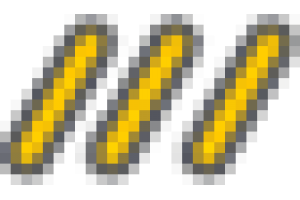初中英语必考知识点总结,这些你都掌握了吗?
What does he look like? 1.what does he look like?询问人长什么样,回答:①主语+be+形容词/ 介词短语(he is tall/ of medium height); ②主语+have/has+形容词+名词(she has long hair) what does sb like?询问某人喜欢什么 2.多个形容词修饰名词 多个形容词修饰名词,一般关系近的靠近名词;音节少的在前,音节多的在后。 限定词+数词(序前基后)+描绘性形容词+大小、长短、高低+新旧+颜色+国籍+材料+名词 3.May be 为情态动词+动词原形,在句子中做谓语,maybe是副词,表示可能,大概,一般放在句首。 4.a little,little修饰不可数名词,a little表示一点点,little表示几乎没有 a few,few修饰可数名词,a few表示一点点,few表示几乎没有 5. Find 强调找到的结果 look for 强调寻找的过程. 6.问职业:what do you do?=what is your job? 7.the same as→be different 8.long straight brown hair 9.最后in the end(表事情结局)finally(强调次序)at last(强调经多番努力终于达成) By the end of 直到……为止 At the end of在……末端/尽头 I’d like some noodles 1.名词可分为可数名词和不可数名词(不可数名词作主语,谓语动词用单数)。 可数名词又分单数和复数。 (1)一般+s; (2)以-s,-x,-ch,sh结尾的名词+es; (3)辅音+y,把y变i,再+es; (4)以-o结尾的,有生命的+es(negro—negroes;hero—heroes;tomato—tomatoes;potato—potatoes);无生命的+s; (5)以f,fe 结尾的名词,改f,fe为v+es(leaf—leaves;knife—knives)(例外:roofs,chiefs) (6)单复数同形:sheep,deer.不规则变化:man—men;woman—women;child—children;foot—feet;tooth—teeth等 2.would like sth. 想要某物 Would you like some …? 你想要一些……吗? ——Yes, please./ ——No, thanks. would like to do sth. “想要做某事”。 Would you like to … ? 你愿意去做……吗? —Yes, I’d like / love to./—I’d like/ love to. But I’m too busy. would like sb to do sth “想要某人做某事”。 3.order:order food take/ have one’s order In order to为了 In the order按顺序 Order/ book a room 预定房间 Order sb(not)to do sth命令 4.the number of表示“……的数量”,后面接可数名词复数。做主语时,主语是number而不是of后面的名词复数,因此谓语动词要用单数; a number of表示“许多”,相当于many, 后面接可数名词复数,做主语时,主语不是number而是of后面的名词复数,因此谓语动词要用复数。 Number前可用large,great,small修饰,不能用little。 5.仍然,还:still(肯定句) Yet(疑问句、否定句) 6.one bowl of two bowls of 7.what size(+n)would you like? Large/ medium/ small 8.what kind of....... 9.大:big 体格大、笨重→small,little 形容具体的人或物 Huge 物体体积巨大=very big Large物体面积、空间、范围、数量大→small 不修饰人 Great重大事件或行为,伟大,具有感情色彩 10.肯定句中表并列用and 否定句、疑问句中表并列用or 11.around the world= all over the world 12.make a wish 13.blow out 14.in/ at one go 15.get popular 16.cut up(动副结构) 17.bring good luck to 18.different kinds of 19.be short of缺乏 How was your school trip? 1.一般过去时 基本结构:主语+动词过去式+其他; 否定形式: ①was / were + not; ②在行为动词前加didn't,同时还原动词; 一般疑问句: ①Was/Were+主语+其他? ②Did+主语+动词原形+其他? 2.动词过去式规则变化:直接加ed; 以不发音e结尾的单词,直接加d; 以辅音字母+y结尾的,变y为i加ed; 以元音字母+y结尾的,直接加ed; 以重读闭音节结尾的,双写最后的辅音字母+ed 3.How was your school trip?= what was your school trip like? 4. Go for a walk 5. Milk a cow 6. Ride a horse 7. Quite a lot 8. Show sb around 9. 并列谓语的时态和数必须一致。 10. In the countryside 11. after that What did you do last weekend? 1. go+V-ing与do some +V-ing go+V-ing表示“去从事某种活动”(一般指户外)go shopping/ swimming/ skating/ dancing/ skiing/ climbing/ camping/ hiking…… do some +V-ing 表示“从事某种活动”(一般指室内)do some writing/ washing/ cooking/ cleaning/ reading…… 2. go to the cinema 3. camp by the lake 4. study for a test study for the English test 5. work as a guide 6. living habits 7. stay up late 8. shout at sb 因生气或愤怒向某人吼叫; shout to sb 对某人大声叫喊,目的是让人听见 9. run away 10.fly a kite 11.adj修饰不定代词 adj要放后面 something important,anything interesting 12.take sb to… 带某人去…… 13.put up tents 14.make a fire 15.on the first night 16.each other 17.get a terrible surprise 18.finish doing 19.look out of…从……朝外看(window,door……) look out at sth 向外眺望…… look out for 留神、注意、小心、关心 20.feel/ watch/ see/ hear sb do sth强调整个过程 feel/ watch/ see/ hear sb doing sth强调动作正在进行 21.jump up and down 22.wake up 23.so +adj +that +结果状语从句 “如此……以致……” eg:I was so busy that I didn’t go to sleep for 3 days. The weather was so cold that they had to stay at home. The coat is so expensive that I don’t want to buy it. so that 引导目的状语从句,以便,为了(in order to) eg:they got up early so that they could catch the early bus. I raise my voice so that I can make myself heard.
相关文章
- 初中英语:初中3年英语词缀汇总! 帮你轻松记忆中考1600词!
- 初中英语 50 个必考句型 + 8 大时态结构,你掌握了吗?
- 初中英语的八种否定形式,你知道有哪些吗?
- 初中英语26种情景下的交际用语,太全了,必须收藏!
- 初中英语:这份短语大全初中三年都在考,考前一定好好复习!收藏
- 初中英语:8类固定搭配短语,英语高分肯定用得着!
- 初中英语阅读理解解题技巧大揭秘,轻松攻下阅读大关!
- 英语学霸整理:初中英语重点句型100句,吃透了,中考稳拿高分!
- 初中常见英语单词词形转化,收藏学习!
- 初中英语常考的150组形近词,一篇理清!
- 一张表记完初中英语必考338条核心短语,学霸都在偷偷背!
- 英语学霸整理:初中英语重点句型100句,建议熟背!
- 初中英语10大魔鬼动词,记准了英语考高分!
- 【英语资料】23张思维导图,搞定初中英语全部语法,系统分类一目
- 初中英语 | 130条常考固定搭配,老师说很有用!
- 初中英语199组重要单词变形,历次英语考试都在考,没有理由不掌
- 初中英语50道易错题解析,绝对的高分宝典!
- 初中英语 | 这样解完形填空,想不拿满分都难,必看!
- 这21首顺口溜,包含初中英语全部语法知识,期中考试前一定要牢记
- 初中英语常考的34组易混词组和150个形近词,一篇理清!
推荐内容
教育新鲜事
 初中英语:初中3年英语
初中英语:初中3年英语 初中英语 50 个必考句型
初中英语 50 个必考句型 初中英语26种情景下的交
初中英语26种情景下的交 中考英语核心单词固定搭
中考英语核心单词固定搭